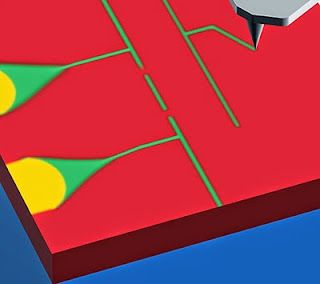Topics: Electrical Engineering, Nanotechnology, Quantum Mechanics, Superconductivity
Electron pairing without superconductivity has been seen for the first time by a team of physicists in the US. Confirming a prediction made in 1969, the electron pairs were spotted in strontium titanate using a single-electron transistor. The observation could provide useful insights into the nature of superconductivity, and perhaps even help in the design of new high-temperature superconductors.
In a conventional superconductor, electrons with opposite spin come together to form Cooper pairs that pass through the atomic lattice without scattering. This interaction occurs because the presence of one electron pulls in positive ions from the lattice, and this in turn attracts the next electron. These pairs then interact with each other to form a condensate from which individual electrons cannot be easily scattered. For this to work, however, the electrons have to be relatively close together. This is not the case in strontium titanate, which has a very low electron density yet is a superconductor at temperatures below a critical temperature (TC) of about 300 mK (millikelvin).
Physics World: Electron pairing without superconductivity seen at long last, Tim Wogan

Comments